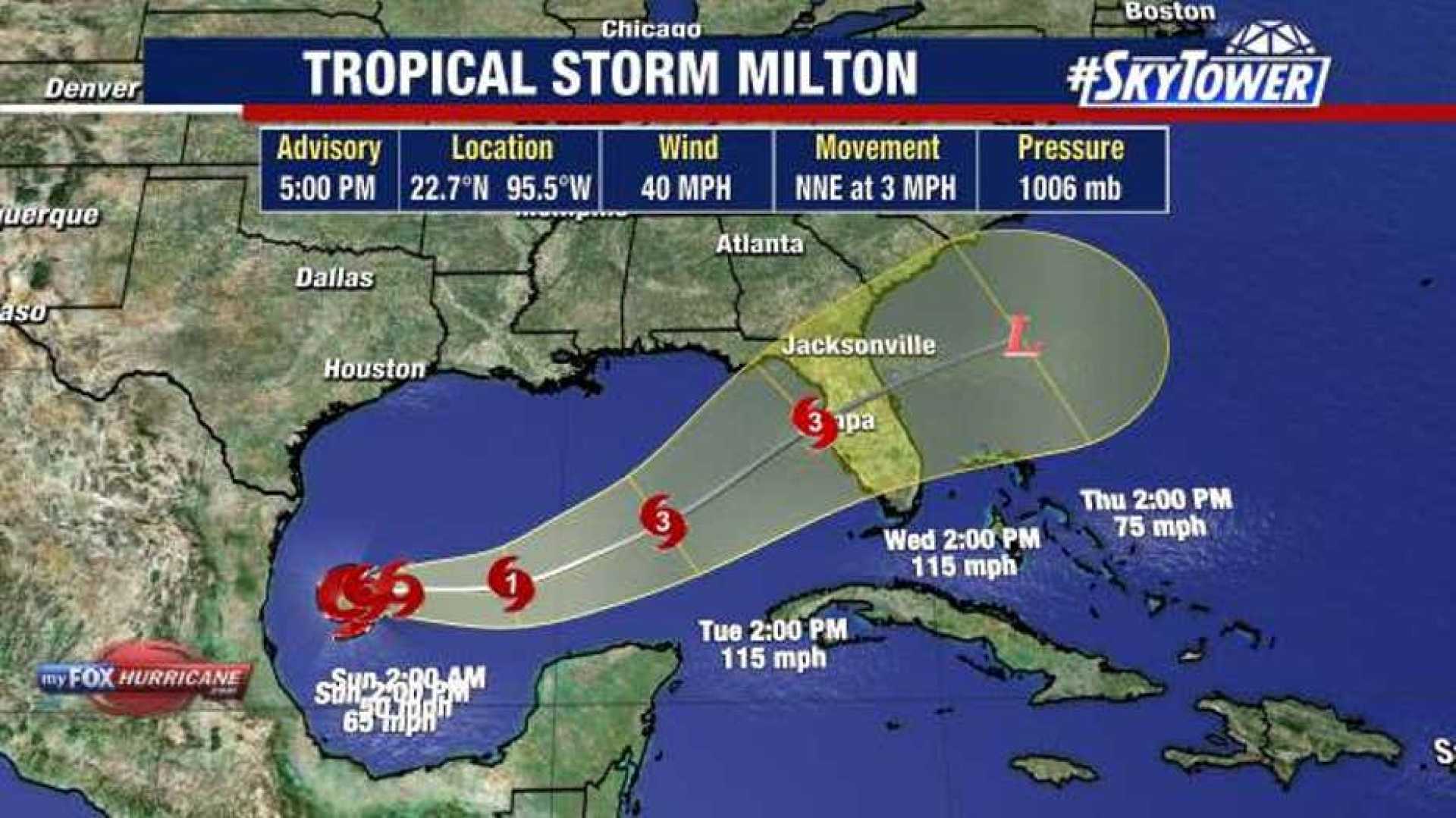News
Tropical Storm Milton Intensifies as it Approaches Florida

Just over a week after Hurricane Helene caused widespread destruction across the Southeastern United States, Tropical Storm Milton is developing near Mexico and heading towards Florida. According to the latest forecast from the National Hurricane Center, released at 4 a.m. Central Time on Sunday, Milton is anticipated to intensify rapidly as it moves eastward and northeastward, potentially making landfall in Florida as a tropical cyclone by Wednesday.
As of Sunday morning, the center of the tropical storm recorded maximum wind speeds of 50 mph, moving east at 5 mph. Forecasters predict that by Monday, wind speeds will increase to between 74 and 110 mph, potentially exceeding 110 mph by Tuesday. The forecasted path will see the storm crossing Florida from east to west, centering on Tampa Bay, with its edges extending into southeastern Alabama, southern Georgia, southeastern South Carolina, and southeastern North Carolina.
The National Hurricane Center has warned of potential life-threatening storm surges and wind impacts late Tuesday and into Wednesday. Residents in the affected areas of Florida have been advised to have a hurricane plan ready. Heavy rainfall is forecasted from Sunday through Monday, presenting a significant risk of flash flooding.
On Saturday night, Florida Governor Ron DeSantis declared a state of emergency across 35 counties, including Brevard, Broward, Charlotte, Citrus, Collier, DeSoto, Flagler, Glades, Hardee, and Hendry, among others. Governor DeSantis communicated on X, formerly Twitter, stating, “We will continue staging state assets to prepare for efficient search and rescue, power restoration, and roadway clearing.”
This storm follows shortly after Hurricane Helene, a Category 4 event, which left a calamitous impact through regions including Florida, Georgia, and Appalachia. The Associated Press reported a death toll reaching 227. Heavy rains and strong winds caused mudslides, power outages, and severe flooding, particularly affecting states such as North Carolina, Tennessee, Virginia, and Alabama, all of which had major disaster declarations.
In North Carolina, the town of Asheville experienced exceptional rainfall, causing the Swannanoa River to crest at 26.6 feet—exceeding the major flood stage level by 10 feet—a height not seen since 1791.












